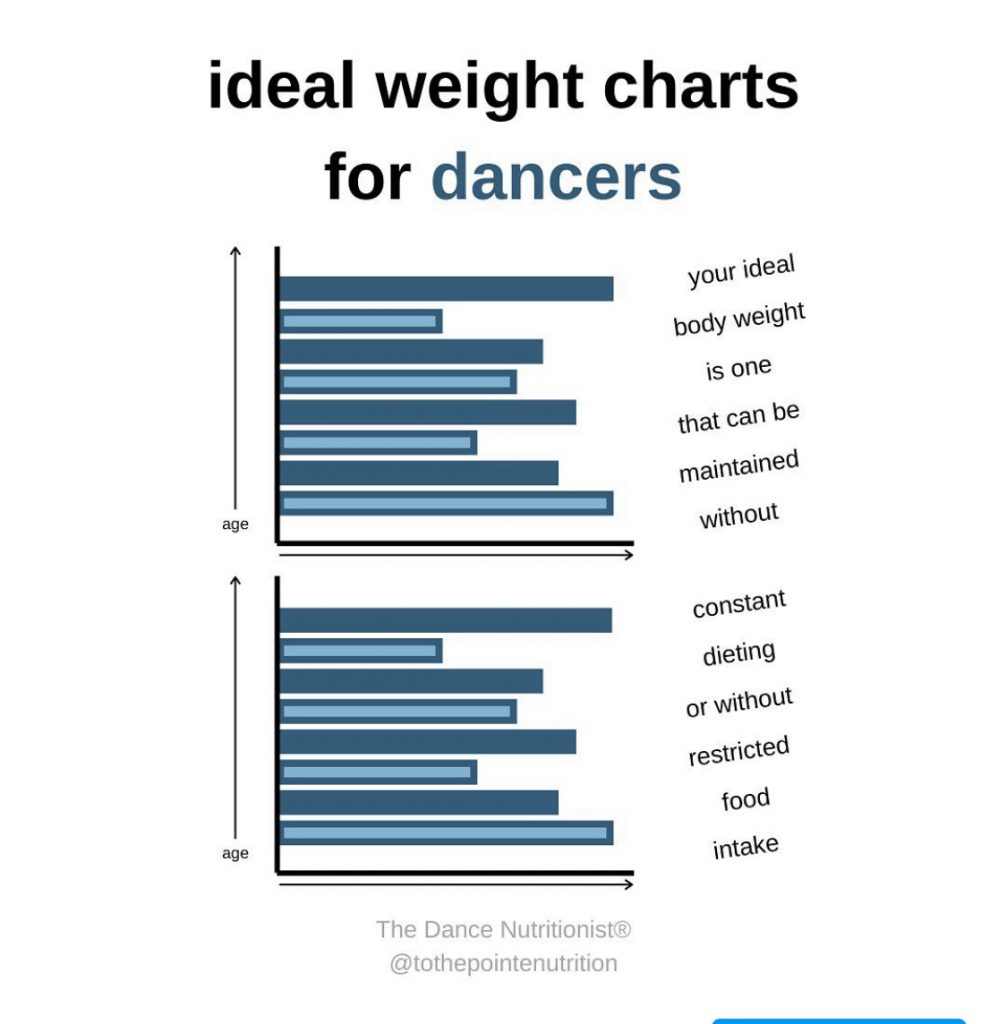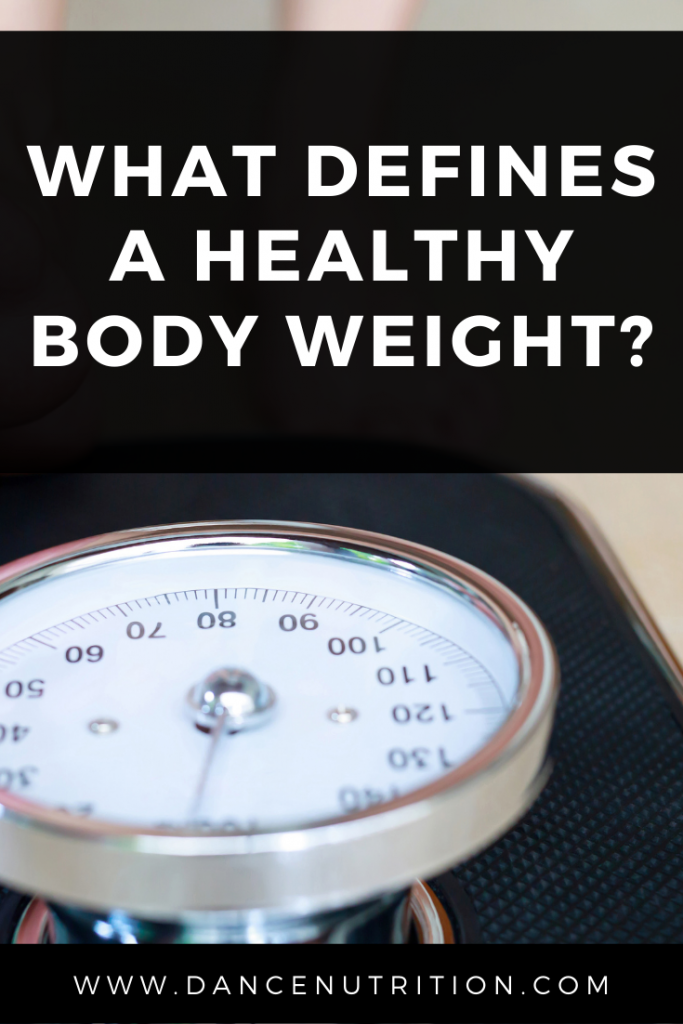Are you a professional dancer or a pre-professional student wondering what an “ideal” dancer’s weight should be? Have you relied on height and weight charts to guide your goals? If so, you’re not alone, but it’s time to rethink that approach.
As a Registered Dietitian Nutritionist, I often see dancers equating body weight with achievement. In reality, weight is not a reliable predictor of success or of health. Let’s explore why.
The Flaws of BMI (Body Mass Index) Charts
Doctors often use BMI (Body Mass Index) as a quick measure of health. It compares weight to height and places people into categories like “underweight,” “normal weight,” or “overweight.” Using BMI as a tool to measure health follows a J-shaped curve where increased disease risk falls on both ends of the spectrum (underweight and obese).
But BMI has major limitations and inaccuracies. When reading weight, the number represents multiple components of body composition:
- Muscle mass
- Body fat
- Bone weight
- Organ weight
- Water
For dancers, this distinction is crucial. A scale or BMI chart can’t show the balance of muscle and fat that supports strength, flexibility, and artistry. And because muscle weighs more than fat, active dancers often fall into higher weight ranges that don’t actually reflect poorer health.
Why Fat and Muscle Both Matter
Dance culture often glorifies muscle gain and fat loss. But body fat isn’t the enemy— it plays vital roles in hormone regulation, bone health, reproduction, brain function, and even skin integrity. Paired with muscle, fat is part of the foundation that fuels dancers’ energy and resilience. To learn more about the role of fat in the body, click here.
The Risks of Micromanaging Your Weight
Trying to maintain a weight that’s too low for your natural body type works against your biology. Each person has a set-point weight— a range where the body feels most comfortable. It’s your body’s *happy* weight that is controlled biologically and pre-determined genetically. When intake drops below what your body needs, hormonal shifts kick in to protect survival. Energy is redirected to essential systems, leaving less for areas like reproduction, recovery, and mental focus. Read more about this hormonal response and metabolism here.
This is why dieting, over-exercising, or chasing an unrealistic number on the scale can backfire, increasing fatigue, injury risk, and dissatisfaction. Click here to read about the risks of attempting to maintain a body weight that is too low for one’s genetic blueprint.
Rethinking Health for Dancers
Health cannot be defined by a number on the scale. Research shows that frequent dieting and weight cycling can have negative effects on long-term health.
Instead, a healthy dancer’s weight is one that:
- Can be maintained without strict dieting or obsessive exercise routines.
- Supports energy, artistry, and recovery
- Allows you to enjoy food and movement without constant stress
Ideal Weight Chart for Professional and Pre-Professional Dancers

Body Image in Dance
Many dancers struggle with body image— sometimes to the point of body dysmorphia, where perception of appearance doesn’t match reality. Because training often starts young, dancers can be especially vulnerable to external pressures and critical messages.
Your “ideal” weight is the one at which you feel nourished, strong, and able to fully express yourself as an artist. The more energy spent chasing an arbitrary number, the less is available for your craft.
It’s not easy to detach self-worth from body shape, especially in a field that has long emphasized appearance. But shifting focus toward artistry, performance, and body functionality can help dancers find confidence without constant body scrutiny. A few steps you can take:
- Work with a Registered Dietitian Nutritionist for dancer-specific support
- Focus on fueling for performance, not restriction.
- Realize that the pros of maintaining a healthy (set point) weight outweigh the consequences of striving for a lower weight.
- Explore body neutrality— learning to respect your body even on days you don’t feel your best
Final Thoughts
Dance and performance should never be limited by size or shape. Movement is a universal language, open to all bodies. For dancers, health is best measured not by a scale, but by the ability to create, express, and sustain the art you love. As a board-certified Registered Dietitian Nutritionist for dancers, I encourage you to sign up for The Healthy Dancer® community to learn more about supporting your ideal.



